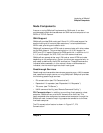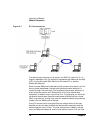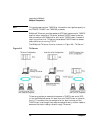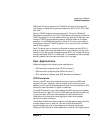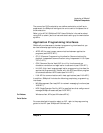
Chapter 2 83
Introduction to SNAplus2
SNAplus2 Components
• If the TP is operator-started (not started automatically by SNAplus2),
and the use of the TP does not need to be restricted, you do not need
to define any additional resources. The only exceptions are when you
want to do the following:
• Change the default timeout for a RECEIVE_ALLOCATE issued
by the TP.
• Specify that the TP is a broadcast queued TP (which means that
incoming conversation requests can be routed dynamically to the
TP wherever it is running).
For more information about TP configuration, see “Defining TPs”.
For more information about the APPC API, refer to the HP-UX
SNAplus2 APPC Programmers Guide.
CPI-C API
A CPI-C application uses the node's LU type 6.2 and mode resources to
communicate with another APPC or CPI-C application on a host or peer
computer. You define the same resources for a CPI-C application as for
an APPC application, as described in “APPC API”.
In addition, if the TP on the SNAplus2 computer is the invoking TP (the
TP that starts the conversation), you may need to define one or more side
information entries for it. Each of these entries provides information
about a partner TP, the LU and mode resources used to access the
partner TP, and any security information required.
For more information, refer to the HP-UX SNAplus2 CPI-C
Programmers Guide.
CSV API
The Common Service Verb (CSV) API provides utility verbs that enable
an application program to perform functions such as character set
conversion and trace file control.
For more information, refer to the HP-UX SNAplus2 CSV Programmers
Guide.
HLLAPI
HLLAPI (high-level language application programming interface)
enables applications that use the SNAplus2 3270 emulator program to
communicate with a host.



